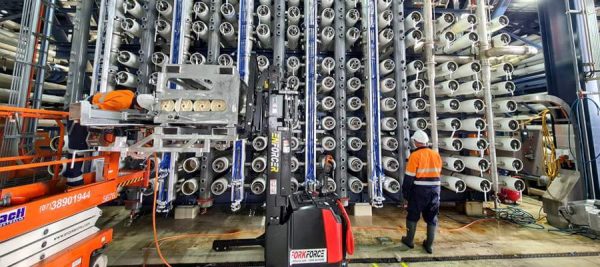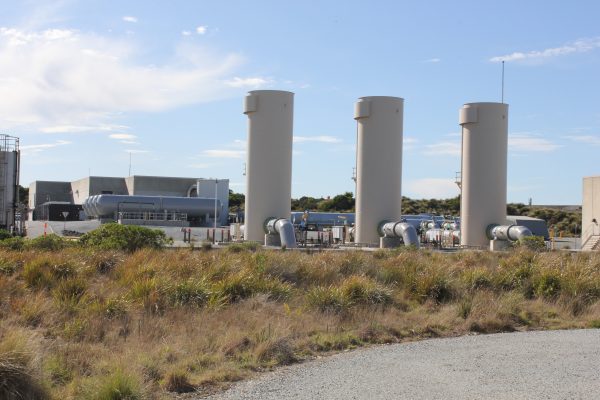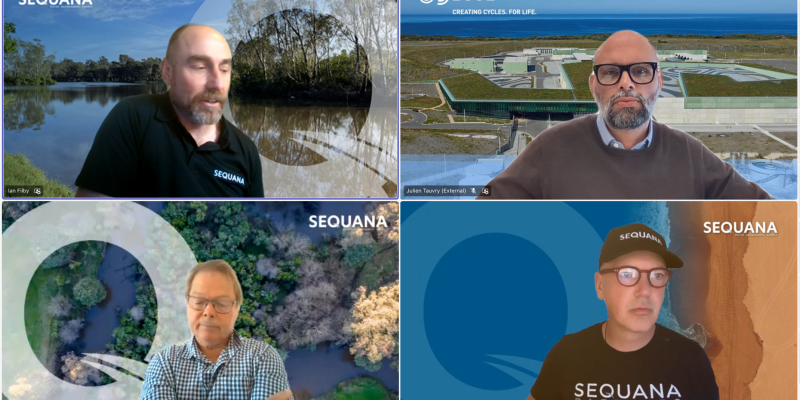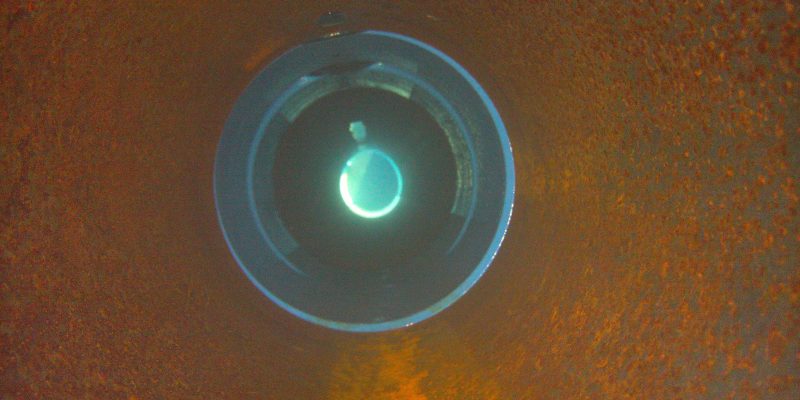
As the driest inhabited continent on Earth, Australia faces distinct and pressing challenges when it comes to securing sustainable water resources. With a growing population, increasing demands from agriculture, and the unpredictable nature of our rainfall patterns, the need for reliable, resilient water infrastructure has never been more critical. This infrastructure not only sustains urban centres but also underpins the livelihoods of regional and remote communities, which rely on it to grow the food, livestock, and crops essential to our daily lives.
Adding to this challenge is the fact that many First Nations and remote communities still lack access to clean, reliable drinking water. Addressing these inequities is a key priority for the Australian Government, as access to safe water is not only a fundamental human right but essential to health, wellbeing, and sustainable development.
While there is no one-size-fits-all solution to Australia’s water security, advances in desalination technology present a critical opportunity. By turning seawater into freshwater, desalination offers a promising, scalable approach to supplementing Australia’s water supply, at the very least, playing a role in the mix of solutions. As we confront the realities of a changing climate, desalination could become a cornerstone of our broader strategy for water management, ensuring that all Australians – no matter where they live – have reliable access to one of our most vital resources.
The need for a new approach to water security
Matt Blaikie, General Manager Expansion Operations at Sydney Desalination Plant, focusing on options for an expansion of the plant, explains, “Traditional water supplies like rivers and aquifers are becoming less reliable due to droughts, overuse, and pollution. Where desalination offers a sustainable solution – or at the very least – warrants a revisit – is by providing a climate-independent source of potable water, reducing pressure on freshwater ecosystems and ensuring a stable water supply for industries, agriculture, and communities, especially in water-scarce regions.”
“Successive droughts, effects of floods on source water quality and treatment efficacy, higher populations and forecast continued growth, and maintenance of wider municipal treatment and distribution infrastructure introducing supply risks have made decision makers and water supply managers realise rainfall independent desalination plants are useful for more than just drought. It has of course helped that these assets were already built, and it made sense to utilise them.”
However, Blaikie adds, “There is more appetite now to plan for water security measures in a structured manner ahead of an emergency, but this approach still needs to be better prosecuted to help decision-makers, and the public accept the cost of implementing these plans while water is not demonstrably scarce. Even as seawater desalination plant owners and operators, Sydney Desalination Plant fully supports a continued portfolio approach that considers demand management and reduction in wastage of water resources, rainfall independent sources, and education and further promotion of water reuse as an important additional contributor to water security.”
Innovation reshaping desalination
Meanwhile, modern desalination has evolved far beyond the energy-hungry, environmentally challenging systems of the past. Today’s desalination technologies are more efficient, often integrating renewable energy sources like solar or wind to reduce their carbon footprint.
Advanced processes such as reverse osmosis are becoming more cost-effective, while new innovations such as 3D printed membranes and membrane spacers are reshaping the field. Traditional membrane manufacturing methods, such as phase inversion and interfacial polymerisation, have long been the standard. These methods, while effective, often result in membranes with structural inconsistencies and limitations in terms of customisation. The lack of control over pore structure and surface properties can lead to reduced efficiency in the filtration process, ultimately increasing energy consumption and operational costs in desalination plants.
Gary Crisp, Chief Engineer, Sequana outlines the advances, “The advent of 3D printing technology is really revolutionising how reverse osmosis (RO) membranes are designed and produced. Unlike traditional methods, 3D printing offers unparalleled precision in creating membranes with specific pore sizes, shapes, and distributions. This level of control enhances the membrane’s ability to effectively reject salt while allowing for greater water permeability, thus improving the overall efficiency of desalination processes.”
“Further, 3D printing enables customisation for different water sources, allowing desalination plants to tailor membranes to their specific operational needs,” Crisp explains.
Beyond improving performance, 3D-printed membranes also contribute to sustainability and cost reduction. The additive manufacturing process minimises material waste, as only the necessary amount of material is used during production. This efficiency not only reduces the environmental impact but also lowers the overall cost of membrane production. With longer-lasting, more efficient membranes, desalination plants can reduce the frequency of replacements, further cutting operational costs and advancing the goal of scalable, sustainable desalination solutions.

From desalination’s waste dilemma to new roads
Desalination plants are critical for regions where freshwater resources are scarce. With more than 16,000 desalination plants operating globally, producing over 5,500 gigalitres of water annually, reverse osmosis technology has become the backbone of freshwater production. However, the membranes used in RO systems – composed of polyamide fibres – are consumables that must be replaced every 7 to 15 years, resulting in vast amounts of waste. Worldwide, approximately 14,000 tons of exhausted RO membranes are discarded annually, with most ending up in landfills.
This waste management issue has spurred researchers and industry leaders to seek sustainable alternatives, shifting focus from simple disposal to innovative recycling methods. The recent collaboration between Western Australia’s Water Corporation, Fulton Hogan, and Curtin University is a prime example of how industries can work together to find environmentally friendly solutions. Gary Crisp, Chief Engineer, Sequana, has been involved in the project since its infancy, after coming up with the idea.
“One of the most promising approaches to recycling these exhausted membranes is incorporating them into asphalt, a material used for road construction. Polyamide fibres, the primary component of RO membranes, have high tensile strength and durability, making them suitable for reinforcing asphalt,” Crisp says.
“By integrating these fibres into the asphalt mix, we hope to improve road performance and longevity, while also reducing the environmental footprint of both road construction and membrane disposal – it’s a game changer, not only for how we deal with exhausted membranes, but it opens up a lot of possibilities for how we handle waste that was previously considered unsalvageable.”
The project aims to enhance asphalt’s resistance to common road defects such as rutting, cracking, and fatigue, which are caused by repetitive vehicular loads and extreme weather conditions. Initial laboratory tests suggest that membrane-reinforced asphalt can deliver superior performance compared to traditional asphalt mixes, potentially extending the lifespan of road surfaces while reducing maintenance costs.
By repurposing exhausted RO membranes into asphalt, researchers are making strides in both road infrastructure and environmental management. This solution exemplifies how industries can collaborate to address pressing environmental issues, creating a win-win scenario for both infrastructure development and waste reduction.
Desalination technology continues to evolve, but the integration of waste materials into new products – like fibre-reinforced asphalt – demonstrates that the path to sustainability is paved with innovation.
But what about…?
The advancements in desalination make it a more palatable part of a portfolio of assets that might be implemented to address increasing water scarcity, however, one of the biggest challenges desalination faces is public relations related.
While the technology and innovations behind desalination have shifted immeasurably, the perceptions around cost and environmental impact have not.
One of the major challenges decision-makers face with desalination is managing its high costs. Desalinated water is generally more expensive to produce than water from dams or aquifers due to the significant capital investment required for plant construction and the ongoing operational costs associated with energy use and maintenance. However, the long-term reliability of desalinated water can make it a cost-effective solution, especially in regions that experience prolonged droughts or where traditional water sources are becoming increasingly unreliable – or unavailable.
The Sydney Desalination Plant, which began operations in 2010, was initially criticised for its high cost. The plant was built during a time of drought but then remained on standby when wetter conditions returned. However, it has since proven invaluable during the city’s more recent droughts, and more notably by supplementing water supply when flooding led to challenges treating water from dams and during maintenance and capital renewals in the wider water supply network. The cost of keeping the plant in an ongoing state of readiness is now seen as a prudent investment in water security.
Public perception is another crucial factor. Desalination projects often face opposition from local communities, who may be concerned about environmental impacts, rising water prices, or the aesthetics of large industrial facilities. Effective public communication strategies that emphasise the reliability of desalinated water, the steps taken to mitigate environmental damage, and the integration of renewable energy can help alleviate these concerns. Transparency around costs and the reasons for pursuing desalination as part of an overall water strategy can also foster greater public support.

However, the reality of modern desalination plants is vastly different to the public’s perception.
Modern desalination plants have evolved to feature beautifully integrated designs that blend seamlessly into their surroundings. Facilities like the Victorian Desalination Plant (VDP), Southern Seawater Desalination Plant (SSDP) and Sydney Desalination Plant (SDP) showcase innovative architecture, often hidden behind vegetated roofs, berms, and other natural elements. This approach not only minimises the visual impact on the environment but also creates a more aesthetically pleasing presence that harmonises with the landscape.
Despite their scale, modern desalination plants create minimal traffic in the surrounding areas. With streamlined logistics and infrastructure, these plants are designed to operate efficiently without causing significant disruptions. Transportation of materials and personnel is optimised to reduce road congestion, ensuring that local communities are not impacted by increased traffic due to plant operations.
One of the most impressive features of today’s desalination facilities is their ability to operate with zero odour emissions. Advanced technology and enclosed systems ensure that the desalination process is completely odorless, contributing to a more pleasant environment for nearby residents and businesses. This is a major improvement from older industrial facilities that often struggled with managing unpleasant odours.
Thanks to cutting-edge technology, modern desalination plants emit almost no sound. Energy recovery systems help to reduce energy consumption, while simultaneously ensuring that plant operations are nearly silent. This allows desalination plants to function without creating noise pollution, further improving their integration into local communities and natural settings.
While desalination provides a reliable water source, it should not be seen as a stand-alone solution. Decision-makers must incorporate desalination into a broader, integrated water management strategy that includes other measures such as water recycling, stormwater harvesting, and demand management.
Matt Blaikie elaborates, “To get the best outcomes in the delivery of infrastructure, the planning process must be robust and be allowed to run its course for the most efficient outcomes balancing cost, quality, and desired and ongoing performance. If we can be allowed, as an industry, to plan and deliver before a water security emergency crystallises, customers will end up with better outcomes.”
After all, modern desalination plants are responsible for creating the most vital, life-sustaining resource – fresh water. As global water scarcity continues to grow, these plants provide a critical solution, turning seawater into safe, potable water for millions of people. By producing fresh water, desalination facilities play a key role in addressing one of the planet’s most pressing challenges, securing access to clean water for future generations.
Sequana recently held a webinar on demystifying the carbon footprint of desalination as part of its Sequana Stream Webinar Series. More information can be found here: Wrap Up: Sequana Stream Webinar Series – Desalination


